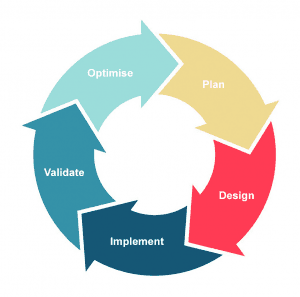Providing WiFi services within an education environment is going to be a challenge that network teams will have treat seriously, sooner rather than later. As the education environment for students, faculty and staff moves towards being completely wireless, network engineers will have to focus attention on how to predict the requirements for data on their networks. Engineering teams will have to appreciate how to configure equipment in order to manipulate radio frequencies so as to accommodate coverage and capacity demands.

The challenges involved in providing WiFi services to such a large set of users are not easy to overcome. Ultimately a ‘lifecycle’ approach needs to be adopted when providing a WiFi service. This will help to ensure end-user experience correlates with campus perception. It has been quite common in the past for students to air their WiFi frustrations on social media.
What we’ll go over are the challenges and solutions to higher education Wi-Fi, what are they specifically, and how should they be approached.
Those challenges are:
- High Density
- Bring Your Own Device (BYOD)
- Capacity
- End User Education
- Interference

As we consider the challenges surrounding Wi-Fi, remember that a lifecycle approach must be put in place. With any Wi-Fi deployment, there must be planning, design, implementation, validation, and optimisation.
High Density
Hundreds of students in a large auditorium, large lecture halls, stadiums, and interactive applications. High density has a large impact on wireless networks due to the large volume of devices and the capacity requirements that follow it.
Largely, the goal is to provide coverage to many devices with a specific amount of APs. This number depends on how many devices need to be serviced.
Solution: Determine how many devices need to be on Wi-Fi, find out their capacity requirements, using this data you can calculate the number of APs required to accommodate requirements.
Bring Your Own Device
The biggest challenge we see for higher education is BYOD. It’s safe to say that campuses do not restrict what kind of devices students can bring. This poses a big question. What is actually on the network? What is the wireless network actually being used for?
If there’s a registration in place, then that’s where the data collection begins. With that data, it is possible to determine what percentage of registered devices are Apple Macbooks, HP laptops, Lenovo laptops, Apple iPads, Samsung tablets, etc. However, remember that we still have unknown devices that are not registered and possibly using guest Wi-Fi.
Solution: Plan for network use requirements. Although the majority of devices may be unknown to us, we must work with what is actually known. What kind of application will be used in the classroom? When this is combined with an estimate for the number of devices (laptops, tablets etc…) it is possible to determine the number of access points (APs) required.
Capacity
What actually is capacity? It is the need to ensure devices connected to an access point are able to use their applications without noticing considerable degradation of performance. Take interactive video as an example. The instructor tells each of the students in their class to load a video. Each of those devices begins initiating a high definition streaming video.
High definition streaming video can take anywhere between 2-4 Mbps for each device, this could easily saturate or fill the capacity that an access point provides. The end result: slow connectivity and poor experience. The instruction is then left at a standstill until everyone can complete the assignment.
Solution: Determine the requirements for the tasks that students are using the network for. This can be as simple as basic web connectivity for email and web surfing or as intense as large file downloads. In either case, knowing the application requirements are important in determining application throughput. That throughput needs to be taken into consideration alongside the total amount of devices. The end result is the number of access points needed to service that capacity.
End-User Education
Setting realistic expectations for end-users is important in understanding how wireless works. Because the medium is shared and half-duplex, it is important to distinguish the differences with a wired connection.
Marketing documentation for the equipment used will depict a different story and claim speeds that devices are not capable of due to the physics of radio frequencies.
Solution: Publish openly available documents describing the wireless service. Understand how users want to utilise Wi-Fi and explain the capabilities of the system based on their requirements.
Interference
A large campus environment, like any environment, is prone to interference. Wi-Fi is a shared medium meaning any device is free to use the same spectrum. Interference negatively affects Wi-Fi by corrupting communications being transmitted by legitimate devices.
Interference can come in different forms from malfunctioning hardware to devices that transmit radio frequency as a by-product.
Symptoms of interference can be devices dropping off of Wi-Fi, slow connectivity, or no connection at all. Some severe cases require specialty hardware to identify the source of interference.
Solution: Spectrum analysis should be performed regularly as part of a pre- and post-deployment site survey. Special software specifically aimed at finding interference is needed. Find the source and remove it (if possible) from the environment.
Reality of the Situation
Usually, most people feel that in order to provide increased capacity for their network users more Access Points simply need to be added to the network. Unfortunately, the solution is not that simple. Instead, as discussed in the points above it is necessary to evaluate how the network is actually being used and how dense usage actually is. Once this is determined a suitable solution can be planned properly.
